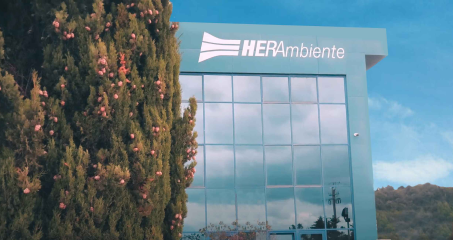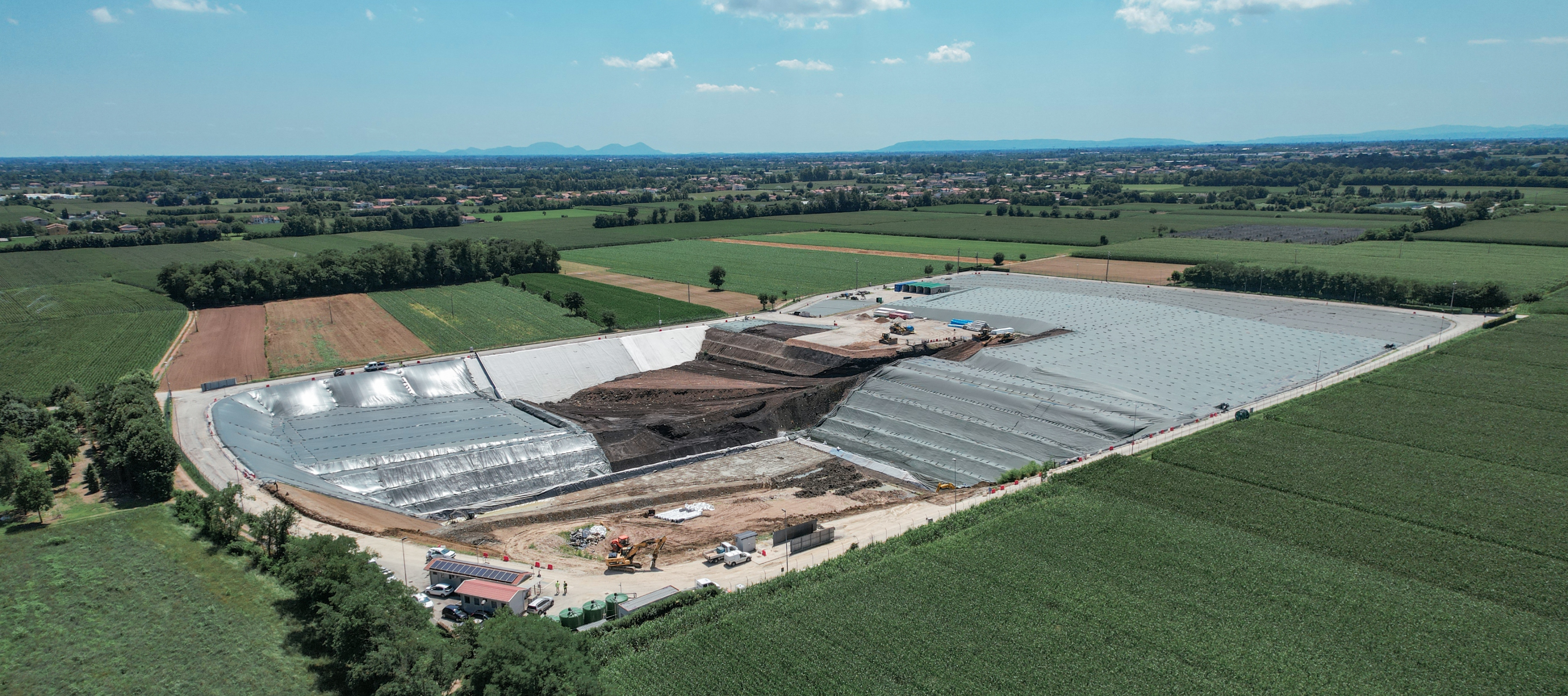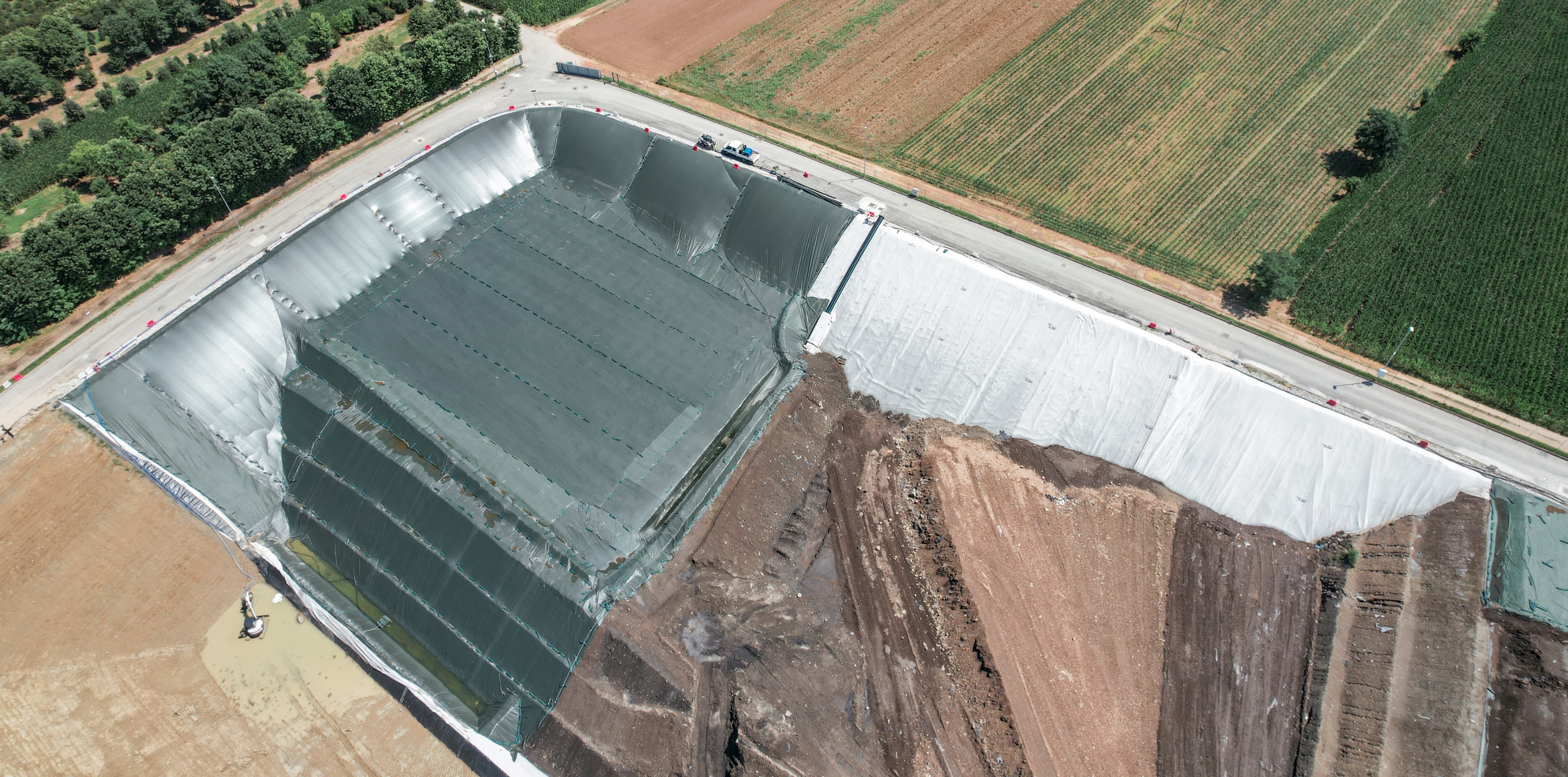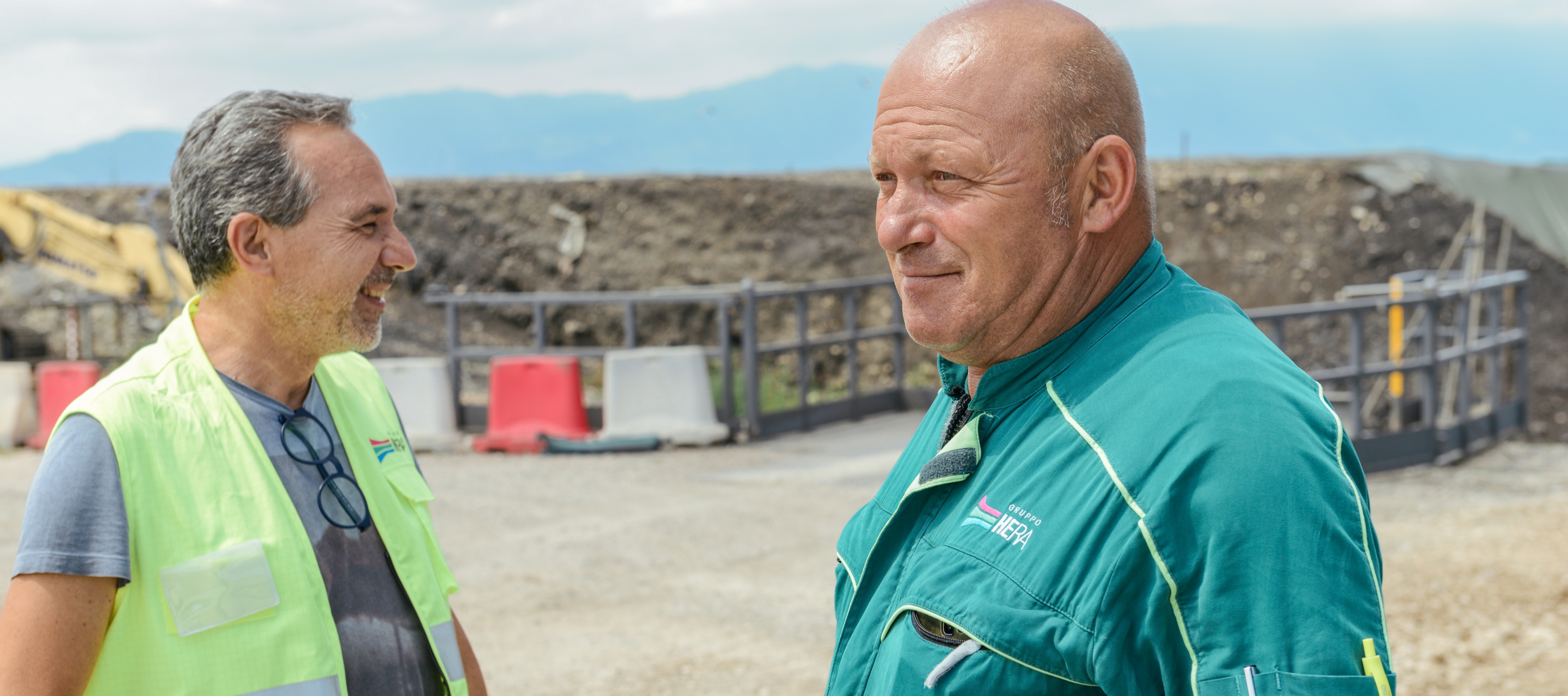Overview
The landfill for non hazardous, non decomposable waste is located in the southwest of the municipal area of Loria (TV), in the countryside between the town of Loria and Ramon. Structurally, it is configured as a typical lowland landfill. The reservoir intended for waste landfilling exploits a former gravel lending quarry later authorized as a landfill for inert waste, thus greatly reducing preliminary excavation operations and environmental impact.
Page updated January 4, 2023
Waste allowed to be deposited within the landfill must follow and comply with the requirements of the Monitoring and Control Plan jointly approved by the Province, ARPAV and Region.
Handling and dumping activities are intended to ensure that the waste is placed in such a way as to minimize its impact on the environment, forming with the same, compacted overlapping layers in order to maximize the density of the placed waste. At the same time, infiltration from meteoric precipitation and therefore the formation of leachate must be minimized by covering with synthetic geomembranes the waste body placed in areas that are temporarily not subject to cultivation.
Handling and dumping activities are intended to ensure that the waste is placed in such a way as to minimize its impact on the environment, forming with the same, compacted overlapping layers in order to maximize the density of the placed waste. At the same time, infiltration from meteoric precipitation and therefore the formation of leachate must be minimized by covering with synthetic geomembranes the waste body placed in areas that are temporarily not subject to cultivation.
The amount of leachate produced is collected in the landfill body through drainage network with slotted pipes and draining material. From the landfill bottom of each area, the leachate is conveyed by gravity to collection/lifting wells that deliver to storage tanks through dedicated piping, and from there the leachate is sent to authorized treatment plants.
The waste placed in the landfill is inorganic matrix thus not involving the development of biogas.
- Compacted clay bottom barrier;
- Bentonite geocomposite mat;
- HDPE geomembrane with a thickness of 2.5 mm;
- Geotextile sheet protection;
- Sand and gravel layer for bottom drainage of leachate.
From bottom to top, the following waterproofing package was made as required by Legislative Decree 36/2003:
- surface cover layer with a thickness of 1 m of topsoil on which the plant species envisaged in the environmental restoration plan are to be planted;
- seepage water draining geocomposite;
- HDPE geomembrane 1 mm thick;
- compacted clay mineral layer with thickness 0.50 m and hydraulic conductivity ≤ 10 8 m/s;
- 0.50 m thick capillary fracture layer.
The final landscaping project, in accordance with Legislative Decree 36/2003, includes a multilayer cover package consisting, from top to bottom, of the following layers:
To enable the naturalistic recovery of the site, the operator, in agreement with local authorities, has identified a series of mitigation/compensatory interventions to be carried out in and around the landfill.
To enable the naturalistic recovery of the site, the operator, in agreement with local authorities, has identified a series of mitigation/compensatory interventions to be carried out in and around the landfill.
- stormwater surface runoff;
- groundwater;
- leachate;
- air quality;
- noise;
- landfill body morphology;
- meteoclimatic parameters;
- waste generated (amount of leachate disposed).
The environmental matrices and emissions monitored as environmental surveillance on potential impacts of the landfill are:







